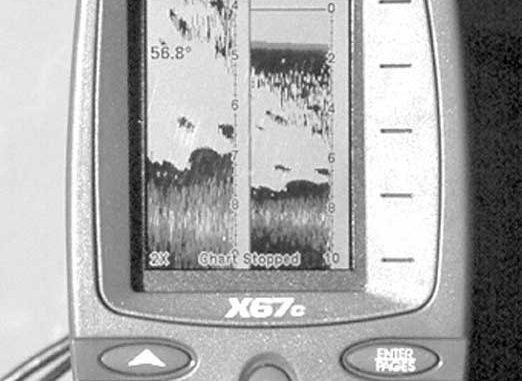
T-John Thompson’s hunting tenacity resulted in the buck of a lifetime last season.
The question on many boaters’ minds is, “Why bother with color at all?” To answer that question, we have to look at how LCD screens present detail, and how the human eye perceives that detail.
A fish-finder categorizes returning echoes according to the signal strength of each echo. The number of signal strength categories equals the number of shades of gray or the number of different colors the unit can show.
A fish-finder that can show eight levels of gray or eight different colors divides all returning echoes into eight separate strength categories. The stronger an echo the darker its shade of gray on a monochrome screen. Color units usually show weaker echoes in lighter colors like yellow or green and stronger echoes in darker colors like purple and red, but different units may use the same colors in a different order across their echo strength spectrum.
The better you can see subtle differences in echo strengths the easier you can see fish in weeds, thermoclines and surface clutter, and the better you can estimate fish size and see large fish within schools of smaller fish or baitfish.
Determining bottom hardness and the difference between heavy weed growth, brush, stumps and rocks also becomes easier.
What’s the advantage of color over monochrome? Think about it — it’s a heck of a lot easier to see the difference between green and orange than the difference between gray level five and gray level six. Seasoned saltwater skippers have told me that different species of fish become easy to identify because they almost always show up in the same color and at the same depth around a wreck.
Color is even more of an advantage for GPS chart-plotters, especially those with smaller screens. The more layers of map or chart detail that you turn on, the quicker the screen gets cluttered with intersecting and overlapping lines. You can’t tell shorelines from depth lines from plotter track lines on a monochrome unit when they are all the same shade of gray. Color units assign different shades and colors to the different lines and turn the jumbled mess into a readable picture.
Color displays have definite advantages, but only if you can see the color screens. I believe that visibility problems are the main reason that color displays are not the industry standard today.
Early color sounders used cathode ray tubes similar to television screens. They worked well in covered cabins but were almost impossible to read in an open boat. If you have ever tried to watch a TV with sun shining on the screen through a window, you get the picture.
The first color LCD screens used basic thin film transistor (TFT) technology that relied entirely on backlighting to present a picture. Any time that ambient light was stronger than the backlight, the screen looked dark and you couldn’t read it.
Screens designed to present a picture using reflected ambient light were designed using transflective technology. They looked great in direct sun, but lost brightness, contrast and color intensity in the shade.
Today’s color LCD screens use a combination of these two technologies along with special coatings, filters and other internal tricks to enhance visibility. Some still look a bit dark in direct sunlight, but they are definitely readable.
No marine product manufacturer could absorb the research, development and production costs for a new LCD screen, so they must buy them from sources outside the marine industry. Advances in color screen technology appear first in the much bigger household electronic, business machine and automotive markets, where millions of products are sold. We have to wait until they filter down to the comparatively tiny marine electronics market.
The basic color LCD screen used in the new Lowrance X67C, for instance, was originally designed for handheld computer/PDA units that are frequently used outdoors, on airplanes and in other brightly lit areas.
Fish-finders and GPS units with color LCDs are already worth having, and they will get nothing but better and less expensive. Lowrance introduced the X67C color fish-finder for less than $300 this year, Humminbird’s Matrix 45 color unit lists for less than $400, and Garmin’s 320C retails for less than $800.


